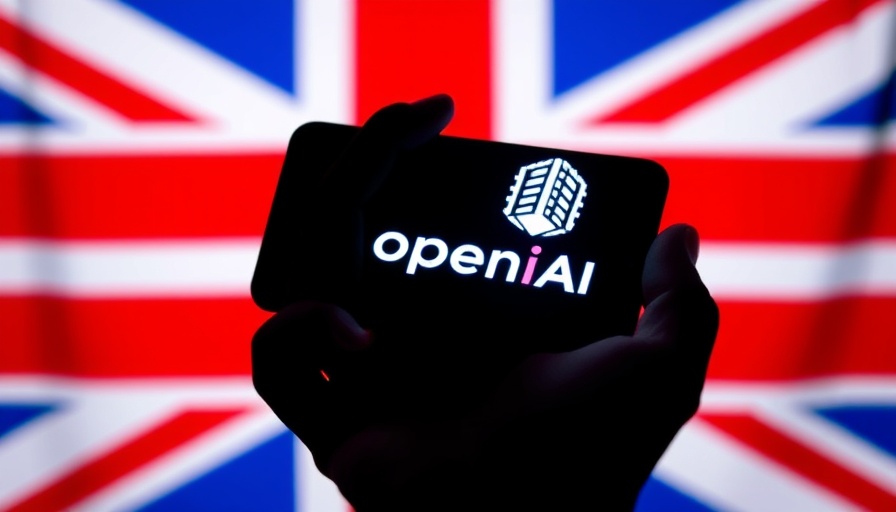
OpenAI's Strategic Partnership: A Game Changer for the UK AI Ecosystem
The recent partnership between OpenAI and the U.K. government signifies a monumental move in shaping the country's AI landscape. With a shared vision of fostering an AI ecosystem that adheres to democratic values, this collaboration aims to drive both innovation and job creation. But what does this mean for the future of artificial intelligence in Britain, and how will businesses benefit from these advancements?
Understanding the Partnership's Impact on British Businesses
The memorandum of understanding, albeit voluntary, sets the stage for enhanced efficiency in taxpayer-funded services through AI deployment. This means not only improving public services but also providing a robust foundation for businesses involved in similarly innovative solutions. For business owners in the $2M–$10M revenue bracket, this partnership is more than just a government initiative; it represents a tangible opportunity for scaling operations and leveraging AI technologies.
AI Growth Zones: Cultivating Innovation
A highlight of the agreement is the establishment of AI Growth Zones across the U.K. These zones are designed to accelerate the development of cutting-edge AI solutions, providing a supportive environment for businesses to thrive. As the U.K. invests £500 million (approximately $675 million) into sovereign AI, companies can expect a nurturing landscape that encourages experimentation, collaboration, and scaling efforts. For those seeking funding, being situated in a designated AI Growth Zone could enhance visibility and access to venture capital.
Future Trends in AI Adoption for Businesses
OpenAI's commitment to develop AI technologies in the U.K. aligns with the government's AI Opportunities Action Plan, which emphasizes ramping up AI adoption across sectors. This plan includes initiatives such as world-class research and governance leadership. What does this mean for business owners? It suggests a growing trend towards adopting AI solutions to boost operational effectiveness and keep pace with competitors. Incorporating AI can not only modernize operations but also provide insights that drive better decision-making.
A Pro-Innovation Approach: What Lies Ahead?
The U.K. government has adopted a ‘pro-innovation’ stance concerning AI regulation, which sets the stage for a favorable business climate. Companies can anticipate a regulatory framework that supports experimentation while ensuring safety and ethical standards. As a business owner, understanding the implications of this regulatory environment will be paramount to navigating future opportunities.
Empowering Growth Through AI
For entrepreneurs and business leaders, the partnership provides an opportunity to rethink operational strategies. Embracing AI not only positions companies for success but also aligns them with the national vision to become a science and technology superpower by the end of the decade. This evolution represents a crucial moment for businesses looking to secure a competitive edge while contributing to the wider goal of establishing the U.K. as an AI-enabled nation.
In conclusion, the partnership between OpenAI and the U.K. government paves the way for profound advancements in AI infrastructure and applications. As business owners, staying informed and agile in this rapidly evolving landscape will be key to leveraging these trends for sustained growth and success.
Are you ready to embrace the AI revolution? Explore how these emerging trends can enhance your operational infrastructure and propel your business forward in this new era of technology.
 Add Row
Add Row  Add
Add 



Write A Comment